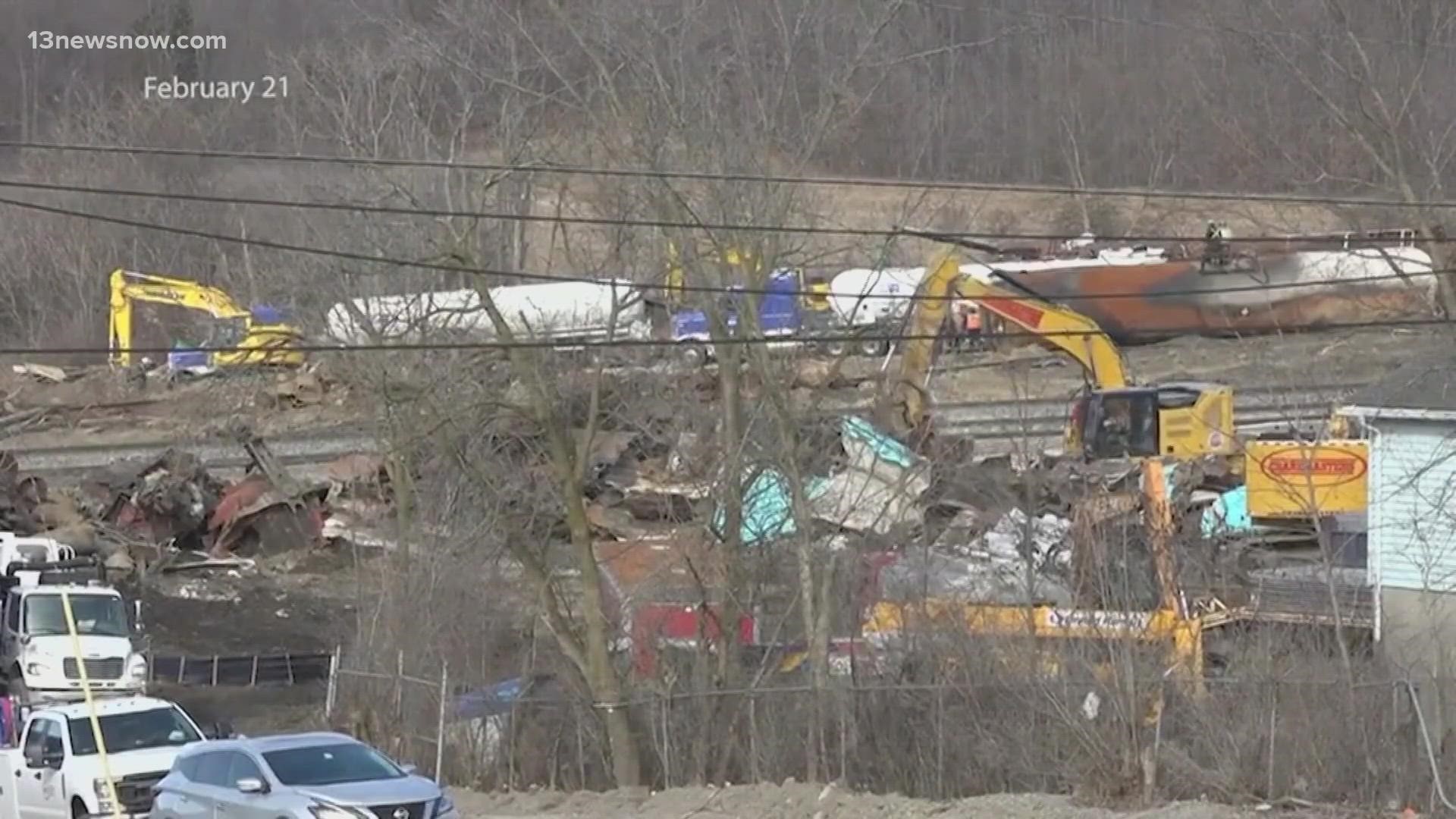HARRISBURG, Pa. — The toxic train derailment in East Palestine, Ohio has sparked new conversations and a new set of proposed laws to combat the issue.
It also may have people wondering -- could it happen in my backyard?
The derailment in East Palestine is the most recent in a series of toxic train accidents across the country.
A train derailed and exploded in Mount Carbon, West Virginia in 2015. It spilled oil into a nearby river and caught a home on fire.
"That was really a moment where, for us at PennEnvironment, we thought this is probably a likelihood that's happening every day in the public and we're just unaware," said David Masur, Executive Director of PennEnvironment.
That same year, non-profit PennEnvironment compiled a report called "Danger Around the Bend." It set out to answer one question.
"What's the risk of a really catastrophic train accident in a dense community?" Masur said.
Masur said East Palestine could have been much worse if it had happened in a larger town.
Some incidents have been deadly. A 2013 train derailment and explosion in a Canadian town killed 47 people.
Freight trains crisscross South Central Pennsylvania every day, many of them carrying hazardous materials through heavily populated areas.
The PennEnvironment report finds nearly four million Pennsylvanians live within a half-mile blast radius of a rail line.
"York, Pennsylvania, Harrisburg, Lancaster, all ranked incredibly high," Masur said. "In fact, specific zip codes in all three of those towns ranked as some of the most high-risk zip codes in all of Pennsylvania."
The report estimates almost 17,000 people living in South Harrisburg, more than 15,000 in South Central York, and more than 14,000 in Northern Lancaster would be at risk in the event of a train catastrophe.
While those numbers would already make for a challenging evacuation, PennEnvironment's executive director admits the real totals would likely be even higher.
"Our numbers are very conservative. The explosion radius in East Palestine was a full mile and the evacuation zone, when they did their controlled burn, was two miles," Masur said. "That's four times the distance we used in our report, and yet we still found nearly four million Pennsylvanian's at risk."
Masur said the newly introduced federal laws could help the public learn which dangerous materials are chugging through their towns and address safety concerns that have existed for decades.

